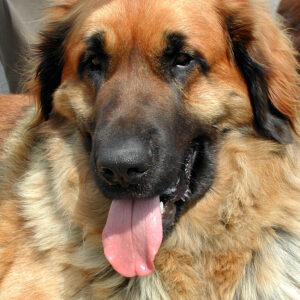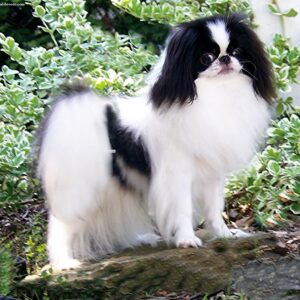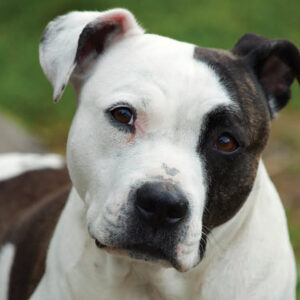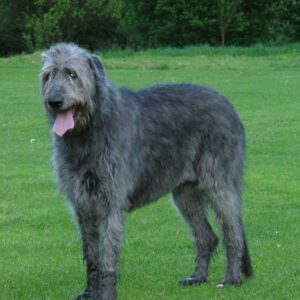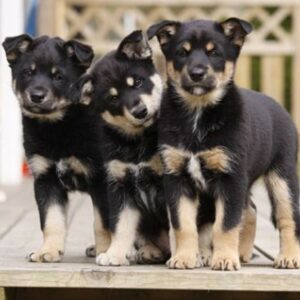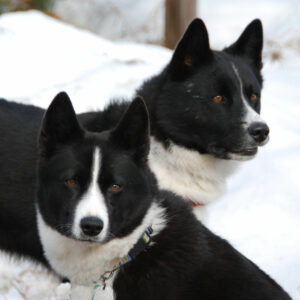Have you ever seen a pug? If not, imagine a hotdog with a face. These adorable creatures are so lovable, it’s hard not to smile when you see them. But, there is a lot more to pugs than just their wrinkly, squishy faces. In this post, we will dive into the history, characteristics, and care of pugs, as well as give you some tips on training and choosing the best foods for your furry friend.
History
Pugs have a rich history, dating back to the Chinese Han dynasty (206 BCE – 220 CE), where they were loved by emperors and their families. They were also kept as pets in Buddhist monasteries, where they were revered for their loyalty and loving nature. Pugs eventually made their way to Europe in the 16th century, where they became a popular pet of nobles and royalty.
During Victorian times, pugs were the height of fashion and were often depicted in paintings and other artwork. The breed was also used as a mascot for the House of Orange in Holland during the 16th century. It wasn’t until the 19th century that the breed was officially recognized by the American Kennel Club.
Today, pugs remain a beloved breed and are often seen in movies, television shows, and even on social media. Their sweet nature and adorable faces have made them a favorite of people all over the world.

Despite their popularity, pugs are prone to health issues due to their brachycephalic (short-snouted) faces. It’s important to choose a reputable breeder who screens their dogs for genetic health issues, as well as to keep up with regular veterinary visits to ensure their health and well-being.
Location of Origins
Pugs originally hail from China, where they were bred as lap dogs for members of the imperial court. They were highly valued for their companionship and loyalty, and were often given as gifts to visiting dignitaries. Pugs were eventually brought to Europe by Dutch traders in the 16th century, where they quickly became a popular breed amongst the royalty and nobility.
Today, pugs can be found all over the world and are a popular pet for families and individuals alike.

Characteristics
One of the most notable characteristics of pugs is their wrinkly, squishy faces. They are a small breed, typically weighing between 14-18 pounds and standing about 10-12 inches tall. Their coat is smooth and short, and can come in a variety of colors, including fawn, black, and silver.
Pugs are friendly, affectionate, and social by nature. They love to be around people and are great with children. They are also a low-energy breed, making them a great pet for apartment dwellers or people who don’t have a lot of extra room for a larger dog.
While pugs are sweet, they can also be stubborn at times. This can make training a bit of a challenge, but with patience and consistency, they can be trained to follow commands and even do tricks.

Because of their short snouts, pugs are prone to breathing issues, as well as eye problems like corneal ulcers and dry eye. They can also be prone to obesity, so it’s important to monitor their diet and exercise regularly to keep them at a healthy weight.
Choosing the Best Foods
When it comes to feeding your pug, it’s important to choose a high-quality food that provides all the necessary nutrients they need to thrive. Look for a food that lists a high-quality protein as the first ingredient, and avoid foods that contain fillers like corn or wheat.
Pugs can be prone to allergies, so if you notice your dog itching, scratching, or showing other signs of allergic reactions, it may be time to switch to a different type of food. Talk to your veterinarian if you have any concerns about your pug’s diet or nutrition.

Training
Training a pug can be a bit of a challenge, but with patience and consistency, they can learn to follow commands and do tricks just like any other dog. Positive reinforcement is key when it comes to training, so be sure to reward your pug with treats and praise when they do well.
Pugs are also prone to separation anxiety, so it’s important to crate train them early on and help them become comfortable spending time alone. This can help prevent destructive behavior like chewing or scratching, as well as reduce stress for both you and your pug.
If you’re having trouble training your pug, consider enrolling them in a puppy class or hiring a professional dog trainer. They can help teach you techniques and strategies to make training easier and more effective.
Taking Care
When it comes to caring for your pug, there are a few things to keep in mind. Because of their short snouts, pugs can have trouble breathing when they get overheated, so it’s important to keep them cool and hydrated on hot days. You can also buy cooling mats or jackets to help regulate their body temperature.
Pugs can also be prone to dental problems, so it’s important to brush their teeth regularly and visit the veterinarian for regular cleanings. This can help prevent gum disease, tooth loss, and other dental issues.
Finally, remember to give your pug plenty of love and attention. They thrive on social interaction and affection, so make sure to spend quality time with them every day.
FAQs
Q: Are pugs good with children?
A: Yes! Pugs are known for being great with children and make excellent family pets.
Q: Do pugs shed a lot?
A: Yes, pugs do shed quite a bit. Regular brushing can help keep shedding under control, but be prepared for some hair in your home!
Q: Are pugs good apartment dogs?
A: Absolutely! Pugs are a low-energy breed and do well in smaller spaces like apartments or condos.
Conclusion
Pugs may have faces only a mother could love, but these little dogs have captured the hearts of people all over the world with their sweet, affectionate nature. Whether you’re considering getting a pug or are already a proud owner, we hope this post has provided you with some helpful information on the history, characteristics, and care of this lovable breed. Remember to always choose a reputable breeder and keep up with regular veterinary visits to ensure your pug stays healthy and happy for years to come.

